A hazardous journey
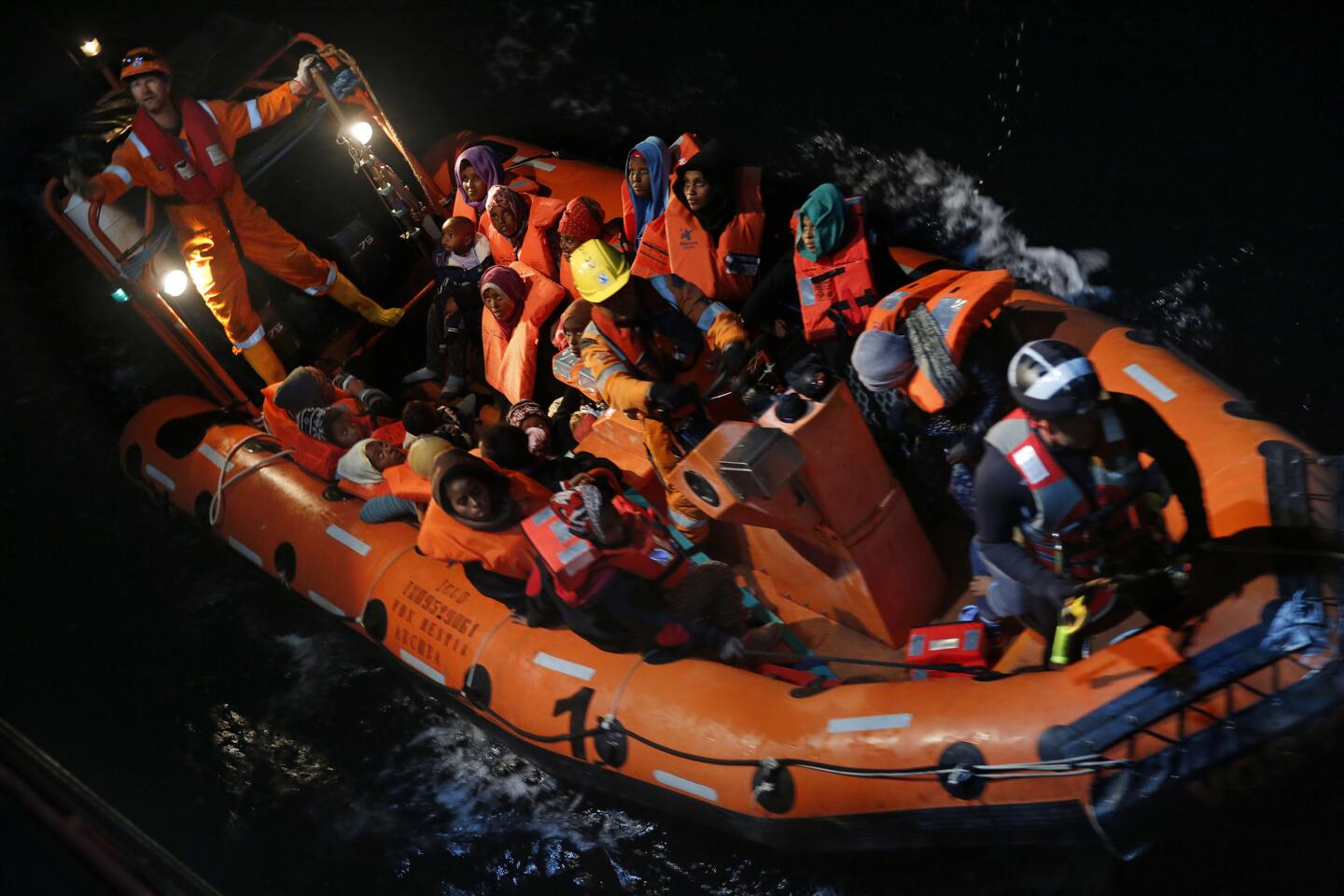
Migrants from a wooden boat are transported by the rescue team of Save the Children to the Vos Hestia off the coast of northern Libya.
(Carolyn Cole / Los Angeles Times)Hundreds of African migrants are rescued trying to cross the often treacherous Mediterranean Sea in a flimsy boat.

Migrants bound for Europe sleep on the deck of the rescue ship Vos Hestia, operated by Save the Children, as it heads for Sicily. The migrants, of several nationalities, were rescued from a smuggler’s boat off the coast of northern Libya on Nov. 22, 2016. Of the 412 migrants, most were from Africa but some were from Asia.
(Carolyn Cole / Los Angeles Times)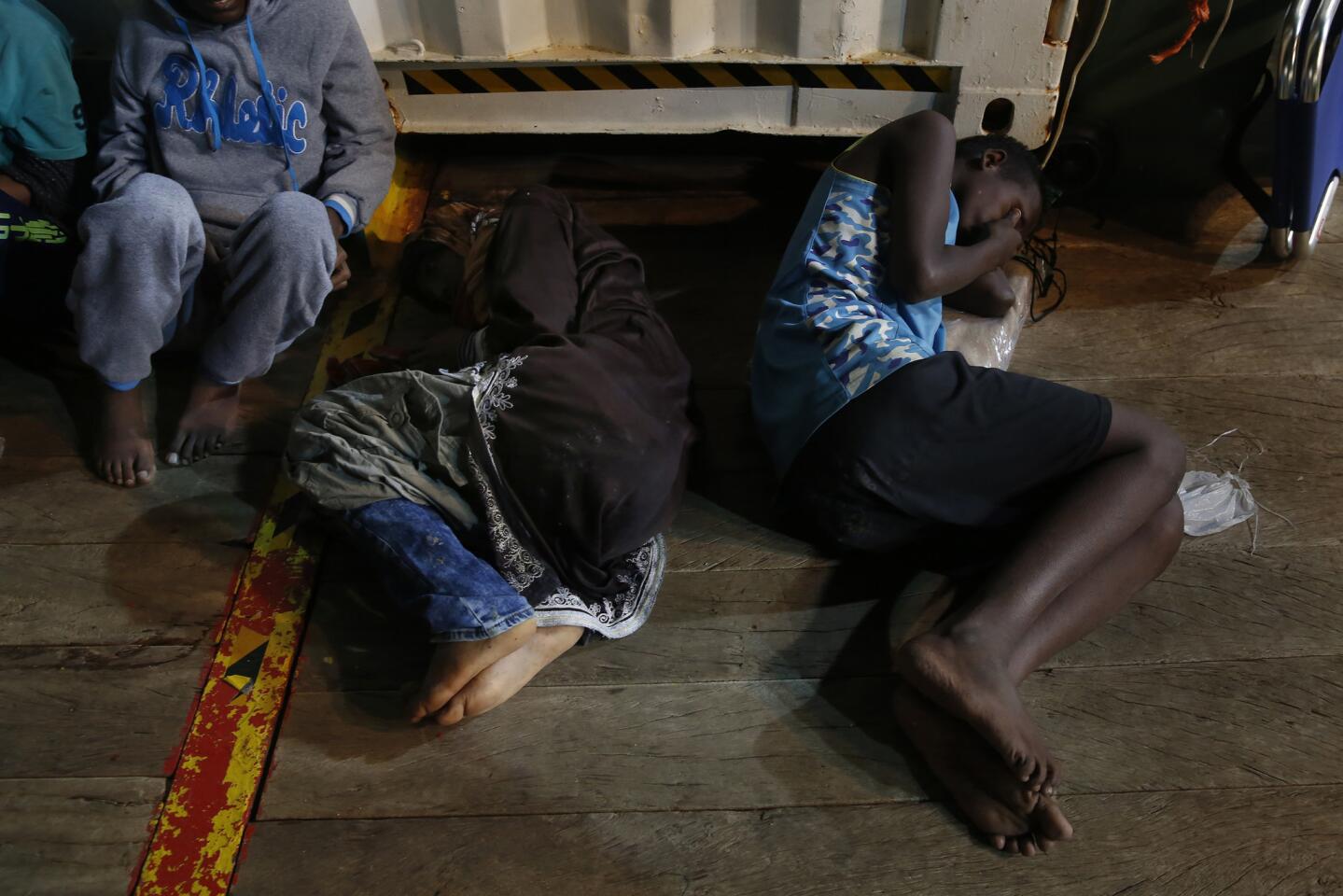
Many of the migrants sustained broken legs after being crammed into trucks crossing the Sahara desert and then into the smuggler’s boat. These three people were in line to receive medical attention after being rescued from a smuggler’s boat.
(Carolyn Cole / Los Angeles Times)
A man waits to be evacuated from the Vos Hestia ship in the port of Trapani, Sicily, where 412 migrants arrived as part of a rescue operation. A staffer from the International Organization for Migration, or IOM, was part of the team receiving the migrants in Sicily.
(Carolyn Cole / Los Angeles Times)Advertisement

Sufian Mohammed David, 20, right, and Ibrahim Fahad Abdullah, 21, center, friends from Comoros Islands, are among the migrants waiting for instructions on board a Save the Children rescue ship bound for Italy. The pair hope to make it to France.
(Carolyn Cole / Los Angeles Times)
The 412 migrants rescued included dozens of women.
(Carolyn Cole / Los Angeles Times)

About 300 of the rescued migrants were from Eritrea. They would gather in circles to sing and pray during the journey to Sicily. Christians and Muslims make up the majority of the population in Eritrea.
(Carolyn Cole / Los Angeles Times)
An unaccompanied minor from Eritrea looks at a notebook he kept in plastic for his journey. Minors were given yellow bands to wear on their wrists.
(Carolyn Cole / Los Angeles Times)Advertisement
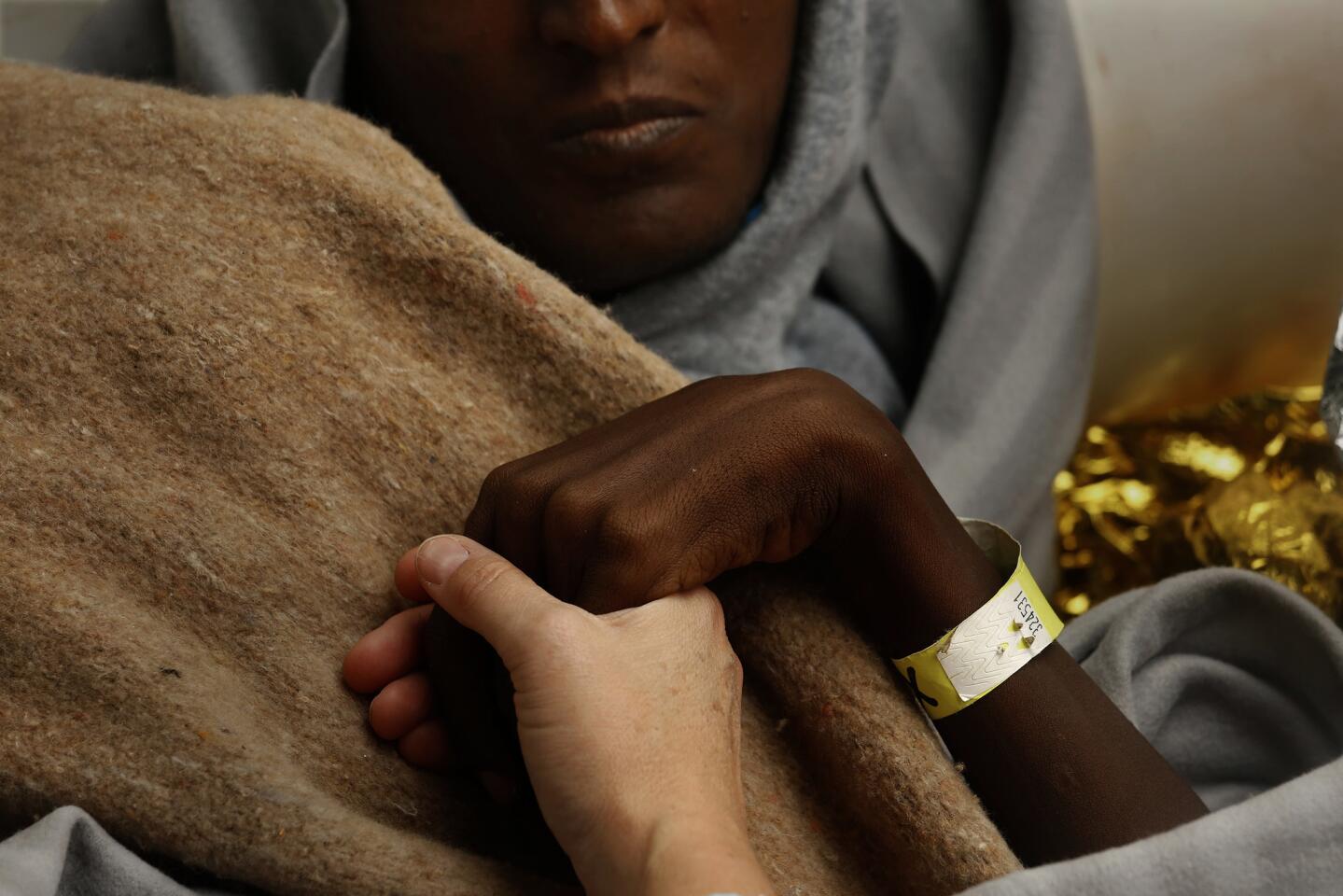
Save the Children doctor Giovanna Scaccabarozzi holds the hand of an Eritrean man injured during the journey across the Sahara desert and then in a smuggler’s boat carrying 412 people from Libya. Many people were crammed below deck on the boat.
(Carolyn Cole / Los Angeles Times)
Marina Buzzetti and Eugene Doherty, right, of Save the Children assist a man too weak to walk after being smuggled through Libya.
(Carolyn Cole / Los Angeles Times)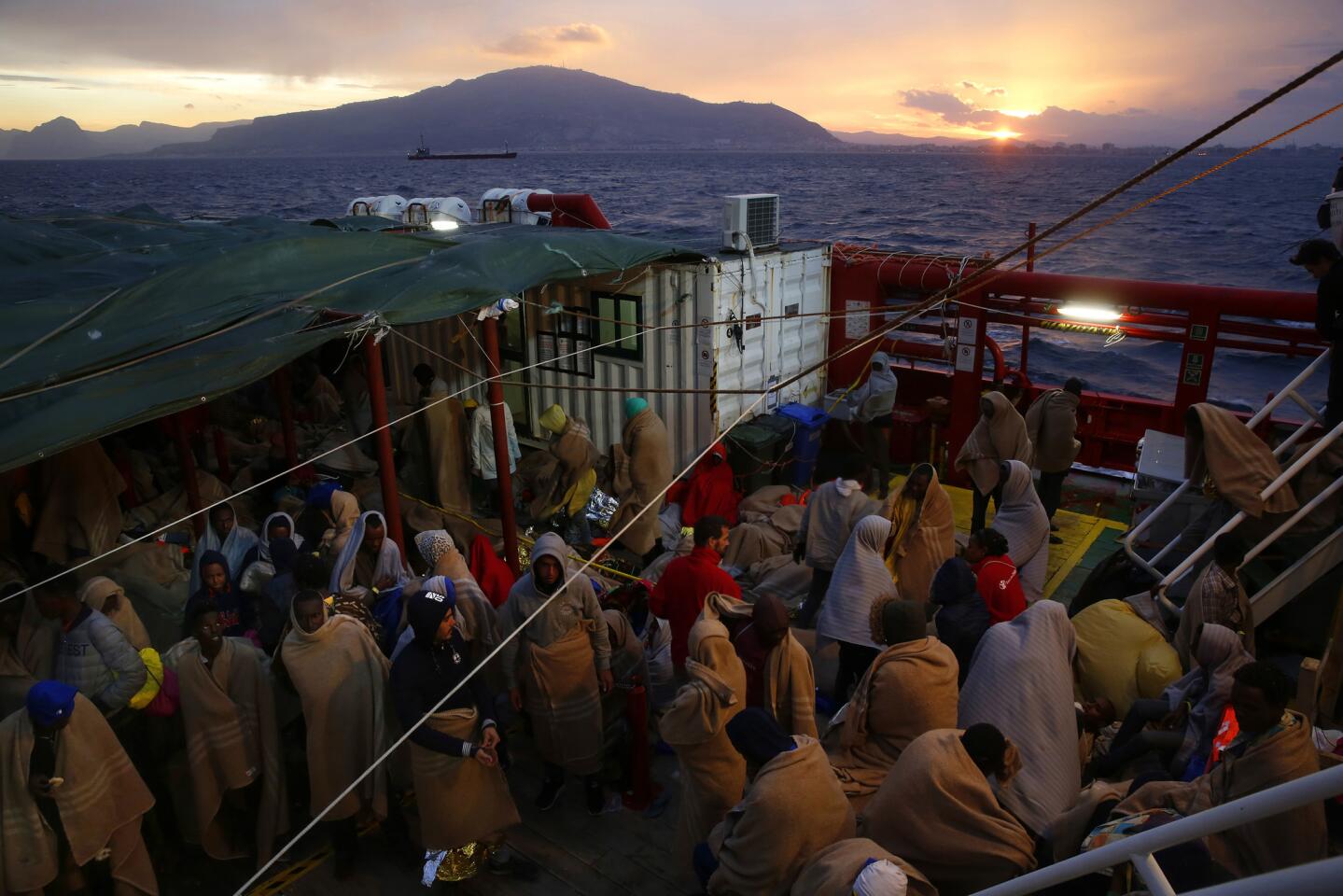
Wrapped in blankets after a night outside on deck, the rescued migrants wait at sunrise off the coast of Sicily on the ship Vos Hestia. They will disembark in Trapani, Sicily, and be transported to locations around Italy.
(Carolyn Cole / Los Angeles Times)
Some of the rescued migrants aboard the ship Vos Hestia.
(Carolyn Cole / Los Angeles Times)Advertisement

A Syrian man, Dr. Rifai, prays on board the rescue ship the morning he arrived in the waters off Sicily, Italy. He had been working as a doctor in Libya before things became too politically difficult.
(Carolyn Cole / Los Angeles Times)
More than 100 of the rescued migrants were unaccompanied minors, most of them young men. One of them, a 15-year-old Eritrean, who called himself M.Y. and spoke English, kept to himself wrapped in a blanket while on the rescue ship.
(Carolyn Cole / Los Angeles Times)
S.H. worked as a midwife in her native Eritrea. She had lost nearly half her body weight during the arduous trip across the Sahara and Libya. She is checked by the medical personnel when the ship reached Sicily.
(Carolyn Cole / Los Angeles Times)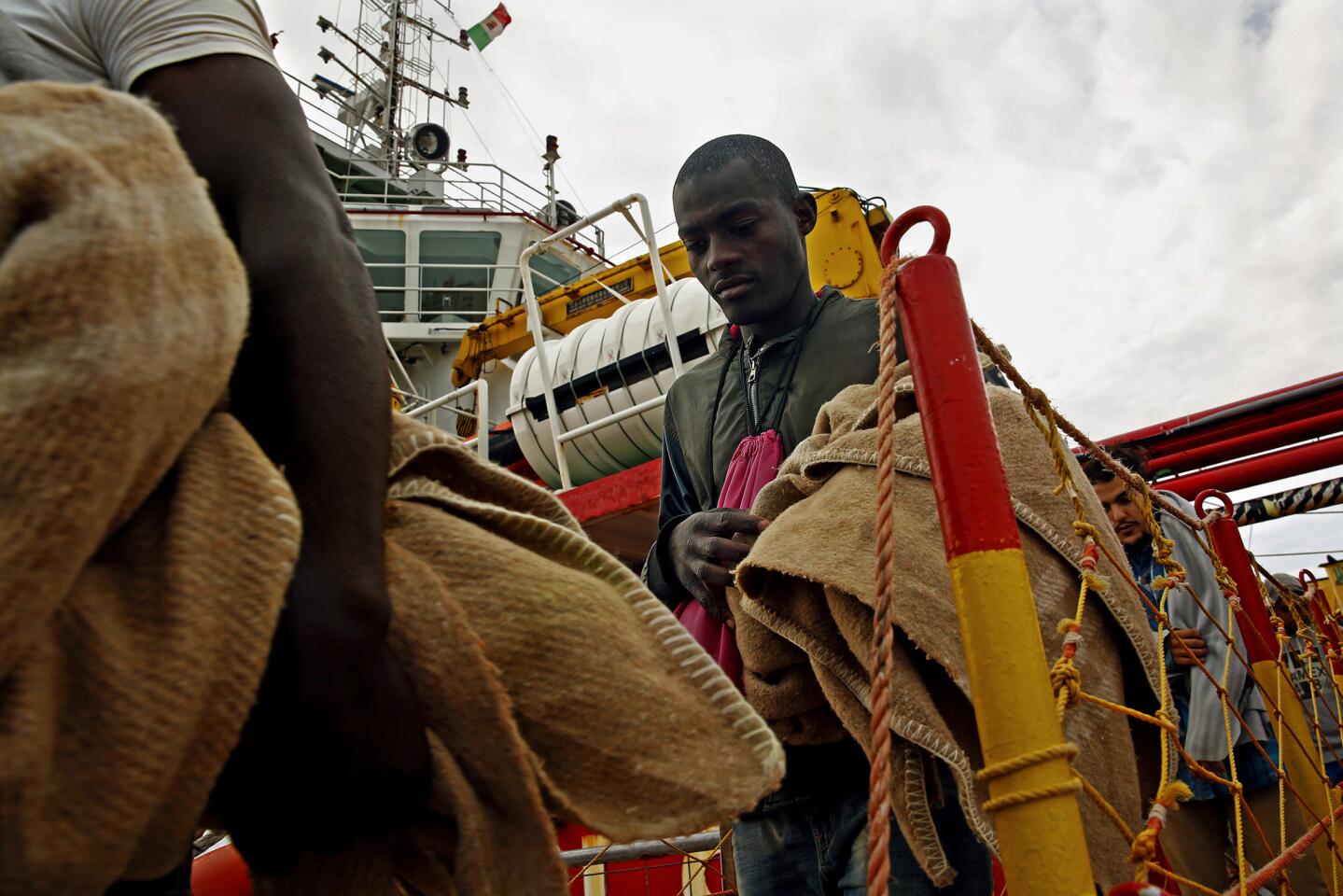
Friends Sufian Mohammed David, 20, and Ibrahim Fahad Abdullah, 21, left, disembark in Trapani, Sicily.
(Carolyn Cole / Los Angeles Times)Advertisement
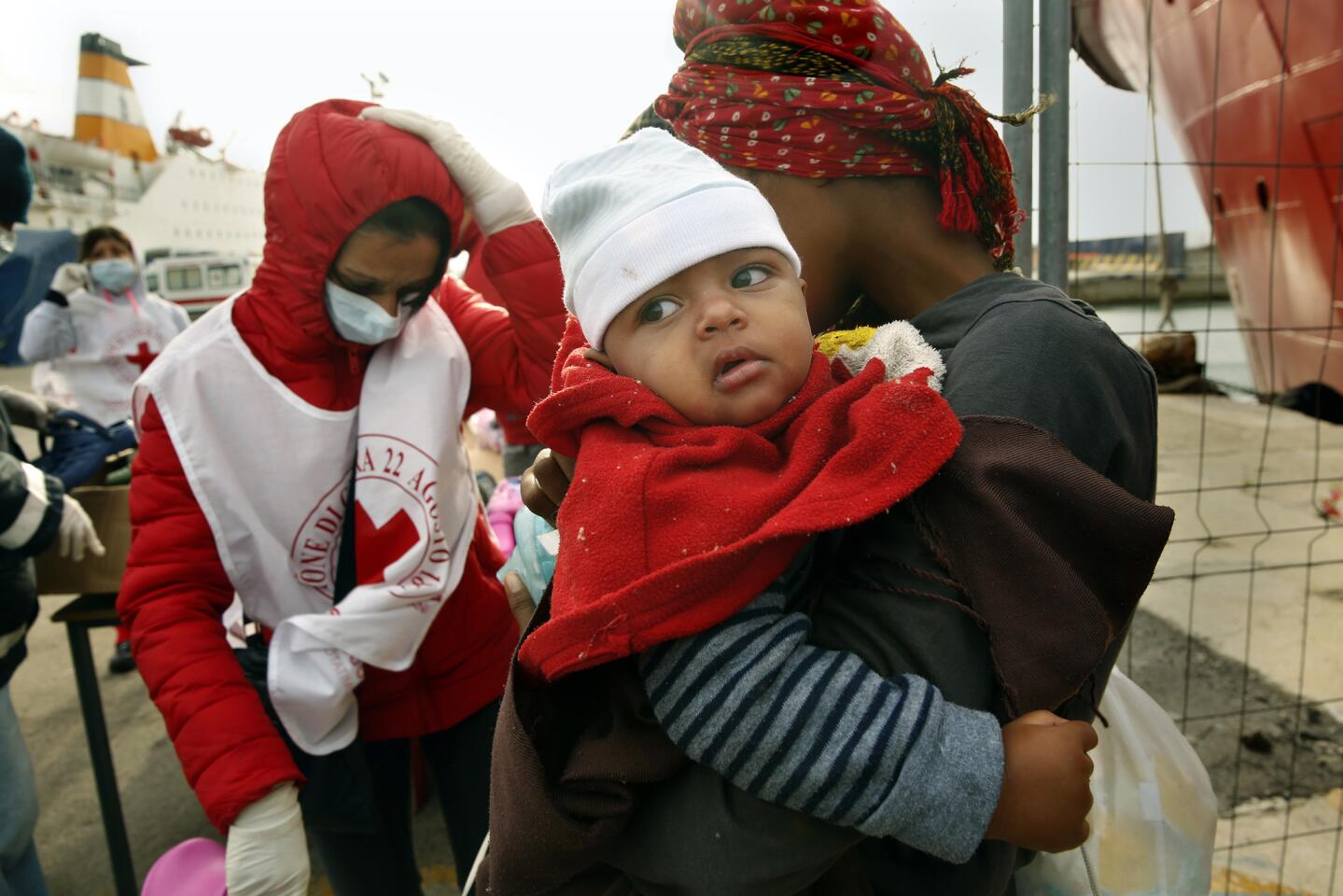
Members of the Italian Red Cross were on hand to assist as the migrants disembark in Trapani, Sicily.
(Carolyn Cole / Los Angeles Times)
The migrants disembark in Trapani, Italy, where they would board buses and be taken to a temporary reception center.
(Carolyn Cole / Los Angeles Times)






